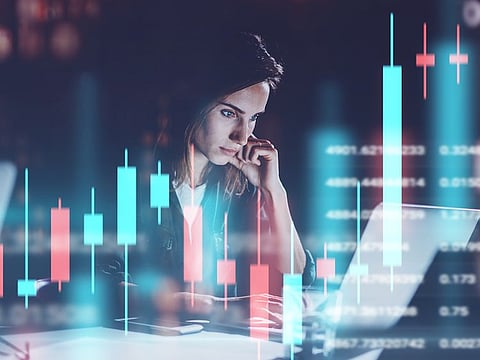Why new technology is top dollar in forex trading
Experts weigh in on how predictive analytics and big data can benefit UAE investors

With an average daily turnover of approximately US$5.1 trillion, according to a 2019 Triennial Survey, the Foreign Exchange (forex) is the world’s richest market in liquidities, its main purpose being to trade currency.
In each day of trading, fortunes are made, fortunes are lost – or incrementally increased or decreased depending on the boldness of the trader and which way the wind is blowing in the market. In the past, there had always been an element of luck, even for the most experienced players.
But – as with everything in modern life – advanced technology has swooped in and changed the game. The financial industry now has two powerful new tools: predictive analytics and big data.
Predictive analytics refers to the use of statistical and quantitative models to forecast the future performance of a particular trading instrument based on current and historical data. This model's core input lies in storing and analysing massive amounts of data, commonly called ‘big data’.
By helping people understand possible future occurrences by analysing the past, predictive analysis can be used in many different industries – notably healthcare, customer relations, fraud detection, underwriting, and direct marketing.
The key to predictive analytics is that it looks at patterns in data to determine if they’re likely to emerge again, which allows businesses and investors to adjust where they put their resources to take advantage of possible future events.
This branch of advanced analysis is increasingly used in risk management and trading in the financial markets – especially in very liquid markets such as forex (FX) – to make better price predictions and more winning trades.
“The first thing you need to think about is your personality, your trading know-how, your financial goals, and of course the level of risk you’re willing to bear,” advised Dr Atie Mouallem, Head of BBAC (Bank of Beirut and Arab Countries) GCC.
“How do you want to improve your goals? What can you do to better pursue your dreams? All of these factors contribute to determining your trader personality profile, as well as your overall strategy.”
Thanks to the emergence of these new technologies, it’s now much easier for investors to trade currencies through online Forex trading platforms – and potentially make big bucks.
“Predictive analytics and big data can help you save time and obtain useful and actionable insights about the FX market, as well as the general mood of market participants – all of which will help you achieve better trading results,” said Mohammed Shaheen, CEO, Seven Capitals.
A key advantage is understanding how much you can gain and how much you could lose over a particular horizon, says Vijay Valecha, CIO, Century Financial
“Knowing how much could be lost will make the trader think about whether they can actually afford to have that capital outflow based on risk appetite and risk/reward parameters.”
He added a cautionary note: “It’s important to remember that all these models rely on using past data and primarily assume that price movements have some patterns and collaborations with past actions. There could be scenarios where history will not repeat itself, the markets will follow some random pattern, and the prices will react more chaotically.”
However, as the new world order is one where digital and automation trends are increasing, the entire financial services industry – including global investments and trading – should be more proactive in adopting such models, say experts.
Getting left behind on this technology curve will likely prove costly.
Sign up for the Daily Briefing
Get the latest news and updates straight to your inbox



